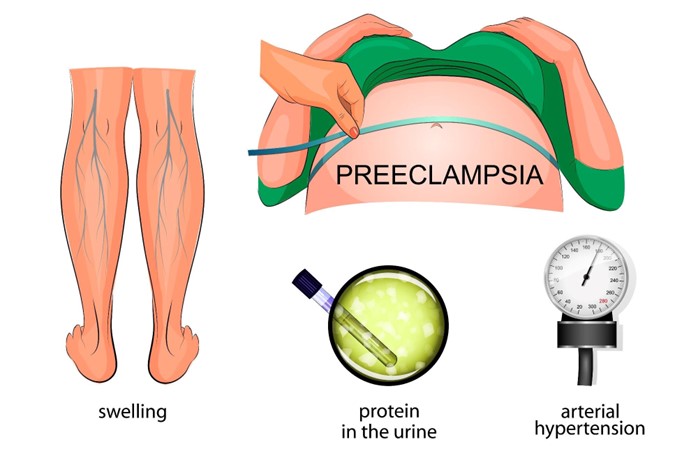When is it most important for the nurse to assess a pregnant client's deep tendon reflexes (DTRs)?
When the client has ankle edema.
If the client has an elevated blood pressure.
During admission to labor and delivery.
Within the first trimester of pregnancy.
The Correct Answer is B
Choice A reason: When the client has ankle edema, it is important for the nurse to assess for other signs of fluid retention, such as weight gain, jugular venous distension, and crackles in the lungs. However, ankle edema alone is not a specific indicator of preeclampsia or eclampsia, which are conditions that can cause hyperreflexia or increased DTRs.
Choice C reason: During admission to labor and delivery, it is important for the nurse to assess various aspects of the client's health status, such as vital signs, fetal heart rate, contractions, cervical dilation, and pain level. However, assessing DTRs is not a routine part of labor and delivery assessment unless there are signs of preeclampsia or eclampsia.
Choice D reason: Within the first trimester of pregnancy, it is important for the nurse to assess for signs of pregnancy-related nausea and vomiting, bleeding, infection, and ectopic pregnancy. However, assessing DTRs is not a routine part of first trimester assessment unless there are signs of neurological disorders or spinal cord injury.

Nursing Test Bank
Naxlex Comprehensive Predictor Exams
Related Questions
Correct Answer is C
Explanation
Choice A: Blood alcohol level of 0.09% (90 mmol/L) is not the most important finding for the nurse to report, as this is within the reference range and does not indicate alcohol intoxication or withdrawal, which can affect the client's mental status and mood stability. This is a distractor choice.
Choice B: Six hours of sleep in the past three days is not the most important finding for the nurse to report, as this is a common symptom of bipolar disorder during manic episodes and does not require immediate intervention by the health care provider. This is another distractor choice.
Choice C: Serum lithium level of 1.6 mEq/L (1.6 mmol/L) is the most important finding for the nurse to report, as this indicates lithium toxicity, which can cause neurological and renal impairment and potentially fatal complications such as seizures, coma, and cardiac dysrhythmias. Therefore, this is the correct choice.
Choice D: Weight loss of 10 pounds (4.5 kg) in past month is not the most important finding for the nurse to report, as this may be related to decreased appetite or increased activity during manic episodes and does not pose an immediate threat to the client's health or safety. This is another distractor choice.
Correct Answer is C
Explanation
Choice A: Yellow-tinged sputum is not a critical finding for the nurse to report, as this is a common sign of pneumonia and does not indicate an adverse reaction to meropenem. This is a distractor choice.
Choice B: Nausea and headache are not urgent findings for the nurse to report, as these are mild side effects of meropenem and can be managed with supportive measures. This is another distractor choice.
Choice C: Watery diarrhea is an important finding for the nurse to report, as this can indicate a serious complication of meropenem, such as Clostridioides difficile infection, which can cause severe dehydration, electrolyte imbalance, and sepsis. Therefore, this is the correct choice.
Choice D: Increased fatigue is not a significant finding for the nurse to report, as this can be related to the client's underlying condition and does not suggest a problem with meropenem. This is another distractor choice.

Whether you are a student looking to ace your exams or a practicing nurse seeking to enhance your expertise , our nursing education contents will empower you with the confidence and competence to make a difference in the lives of patients and become a respected leader in the healthcare field.
Visit Naxlex, invest in your future and unlock endless possibilities with our unparalleled nursing education contents today
Report Wrong Answer on the Current Question
Do you disagree with the answer? If yes, what is your expected answer? Explain.
Kindly be descriptive with the issue you are facing.
